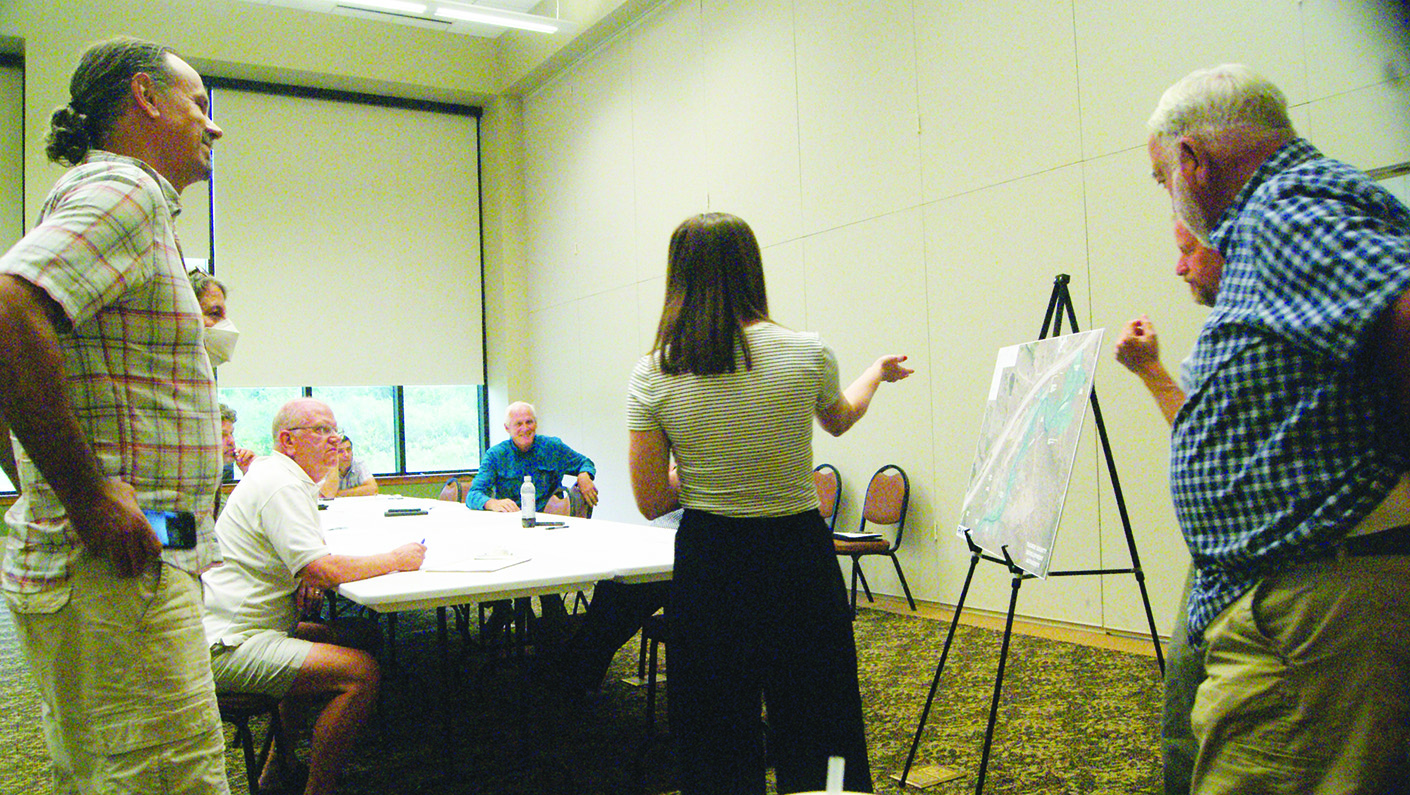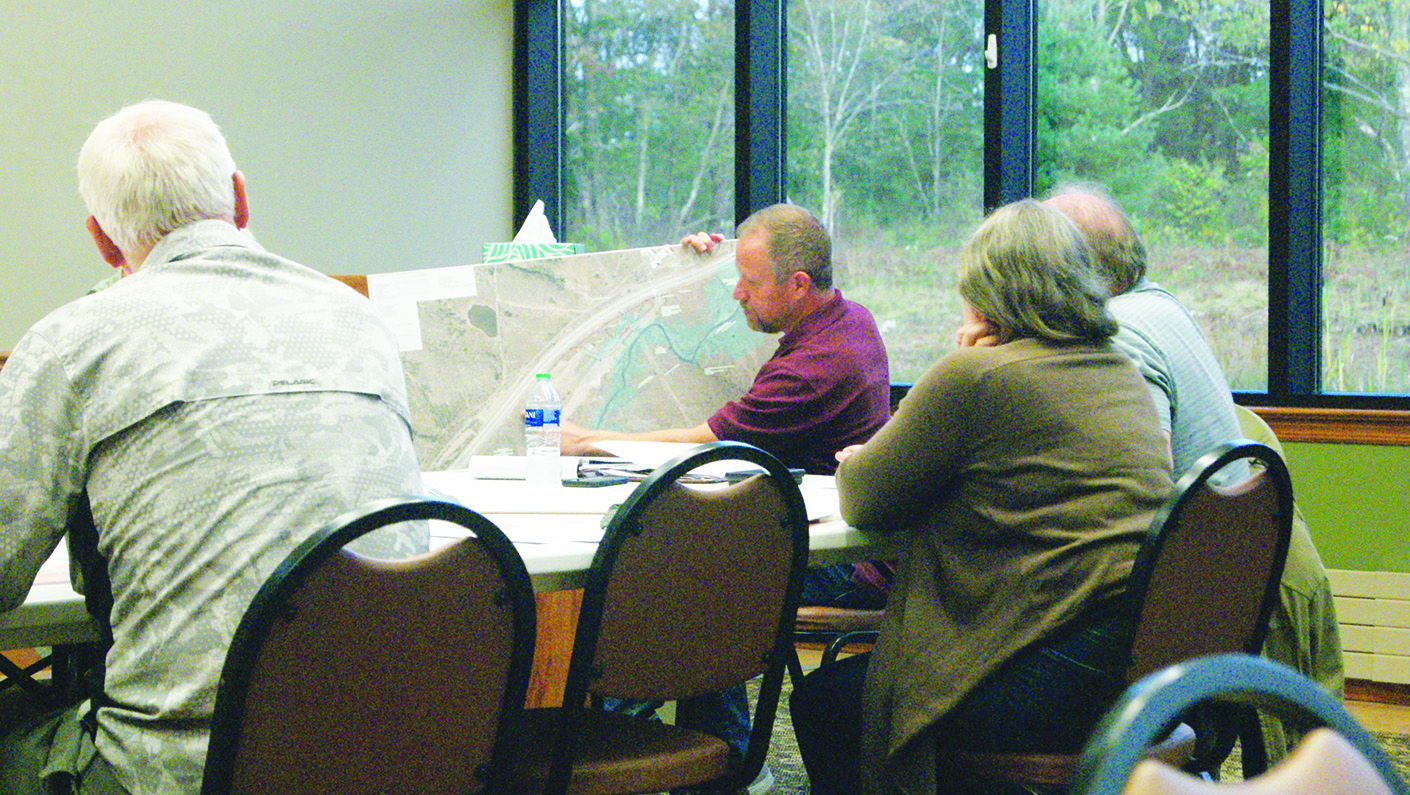

By: Lydia Crawley
The Parsons Advocate
Rhiannon Dodge from RK&K and Josh Seville from Downstream Stategies addressed the Tucker County Development Authority on the details of a recent Wetlands Delineation Survey of the Industrial Park. The report was part of the Authority’s September 21st meeting.
Dodge acknowledged questions the Board has had over whether a different time of year for the study would have changed the results. “I know there were some questions as to whether it had been done at a different time of year, if that would have changed the results,” Dodge said.
Seville said that seasonal changes would not have affected the results. According to Seville, the results are gathered through a variety of methods with one being plant growth in the area. “Unfortunately, that is not the case,” Seville said. “So when you are doing a Wetlands Delineation, you’re looking or three things. You’re looking for hydrology, plants and soils.”
According to Seville, more than the presence of water is used to determine wetlands during dry seasons. “If you happen to be in a very dry time of year,” Seville said. “You’re finding that other ways just outside of finding actual water…you’re finding water logged leaves, you’re finding disturbed ground where water has laid, all typical things that you would find in wet areas. And if you don’t have the hydrology, you’re not going to have the plants. The hydro plants are not going to be there. If you walk onto a property and you see wetland plants, most chances, most times, you are also going to have hydrology in your soils.”
Executive Director Steve Leyh questioned Seville about a part of the Industrial Park property that was listed on the wetlands registry, but was not included on the initial 2005 study of the property. “This area in here, was in the inventory, according to the report. But it wasn’t in the inventory initially in 2005,” Leyh said.
“We did walk that, as well,” Seville said. “And if you look actually on the National Wetland Inventory, that’s considered a wetland through that area, as well.”
According to Seville, the National Wetlands Inventory looks at a variety of factors when adding wetlands to the listing. “They’re not necessarily in the view fact-checking every little one of those,” Seville said. “They do a lot of that. But they’re looking at topography, they’re looking at, you can find different shading depending on what kind of plant species are in an area. It’s a GIS exercise.”
According to Dodge and Seville, the change of status between the 2005 study and the placing of the area on the inventory in 2009 could be brought before the Army Corps of Engineers to dispute the listing. “Even with what we found, in our professional opinion, there’s a wetland out there. We were finding hydrology, wetland plants, wetland soils. But, when you have the Corp of Engineers, when they come to look at it, there are times when they disagree with what Delineators may have come up with. So, it’s not necessarily like a done deal. So, have the Corp do a site visit. They would basically do a quicker kind of survey of the area and just say yes or no to what we’ve assessed as well.”
Seville and Dodge did say that the Corp of Engineers rarely overturns Delineation results during their Jurisdictional Determination of a site and generally defers to the judgment of the surveyor’s assessment of a site. “They are generally relying on the professionals you hire to do that,” Dodge said.
Seville said that after recent discussions with the West Virginia Department of Environmental Protection, he felt the state could stand as the bigger fight for the future status of the disputed area. Seville said. “I was talking with Nancy with the DEP and she’s now saying that with a lot of the new Supreme Court Rulings about Wetlands, that its changed a little bit. I don’t exactly know all the details of her side of things. But if the Corp were to say that is not a Jurisdictional Connected Wetlands to the streams that they, the State entity, could still claim that it is part of their State waterways. So really, the State, it almost sounds like with the current folks that are there, that they’re almost going to put up a bit more of a fight about what is, what are wetlands.”
There was discussion at the meeting about the possibility of purchasing mitigation credits on the wetlands in order to develop the area, but according to Seville, it would come at a steep cost. “I got a quote from somebody in Randolph County for mitigation acres they have. I feel like he was around $50,000 an acre.” Dodge did say to the Board that if it was an option they wanted to explore, she could get a quote of what the mitigation cost would be in addition to reaching out to the Army Corp of Engineers.
There was a downside to the idea of bringing the Corp of Engineers to do a Jurisdictional Determination at the site, according to Seville. “Really, if another firm were to come up with something different and then the Corp visits, they’re still going to make their determination. The Corp would still make their determinations. They could say, ‘Looks like you missed 15 acres right down there.’”
Seville did go on to say that he didn’t believe that the worst scenario would play out on the Industrial Park site. “They could, but I personally don’t see it happening in this case.”
“The Army Corp is placing their faith in the professionals that you’ve hired to do that delineation,” Dodge said.
However, Seville also said that the wetlands in the area of the Industrial Park are mostly due to man-made interference of the site over decades of various use and development. Seville said. “Everything has just been altered so much out here that you get these places that are just super compacted from years of just construction happening all the time. The soil is going to get compacted, water sits on top of that layer and slowly it turns the land into a wetland.”
The next meeting of the Tucker County Development Authority will be held on October 19 at 6 p.m. at the National Youth Science Center located at 494 Riverstone Road in Davis.



